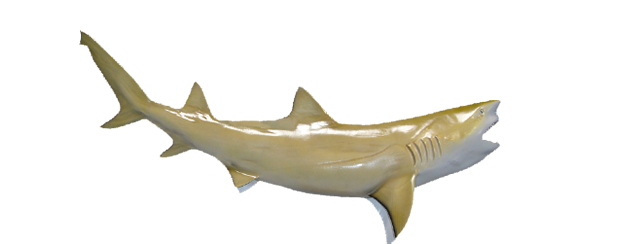Shark, Lemon

View Regulations

Scientific Name
Negaprion brevirostris


Common Names
Brown shark


Description
Lemon Sharks gather their name from their distinctively yellow coloration, though they can range from a yellow to a dark brown or green. The topside coloration usually fades into a paler color on their bellies. The first dorsal fin is the Lemon Shark’s largest and almost equals the size of the second dorsal fin. The tail is oddly shaped with the upper part of the tail larger than the lower part.


Habitat & Behaviour
Lemon Sharks make their home on the bottom of costal subtropical waters. They are often found in places with abundant food sources such as reefs, mangroves and river mouths. Occasionally they can be found traveling up rivers, although the rarely travel far from salt water. During the evening they have been observed near docks and piers only to return to deeper water during the day.


Natural Prey
The Lemon Shark feeds mostly on food that is found near or on the bottom. Their diet includes crustaceans, fish and other invertebrates that it stirs up from bottom.


Handling Tips
It goes without saying that you should steer well clear of any sharks mouth. They also have rough skin which if whipped on you can leave a rash. Little ones wiggle a quite a bit, grab behind gills and hold tail. Larger sharks tail snare if you can and keep in water. When releasing sharks try to leave as little line as possible. Hooks rot out in a few weeks. Pro Angler supports shark conservation and recommends you catch and release. If brought into the boat, leave for 15-20 minutes before handling, shark will tire and be easier to handle as their body is very strong as well. Known to even play dead before snapping at you, so be careful!

- Lucky Tackle Box
- Billfish Bounty in the Heart of the Mayan World – Guatemala
- The Best Species of Shark to Catch
- How to Catch a Shark: what equipment do you need?
- The Best Winter Fishing Spots in Texas





